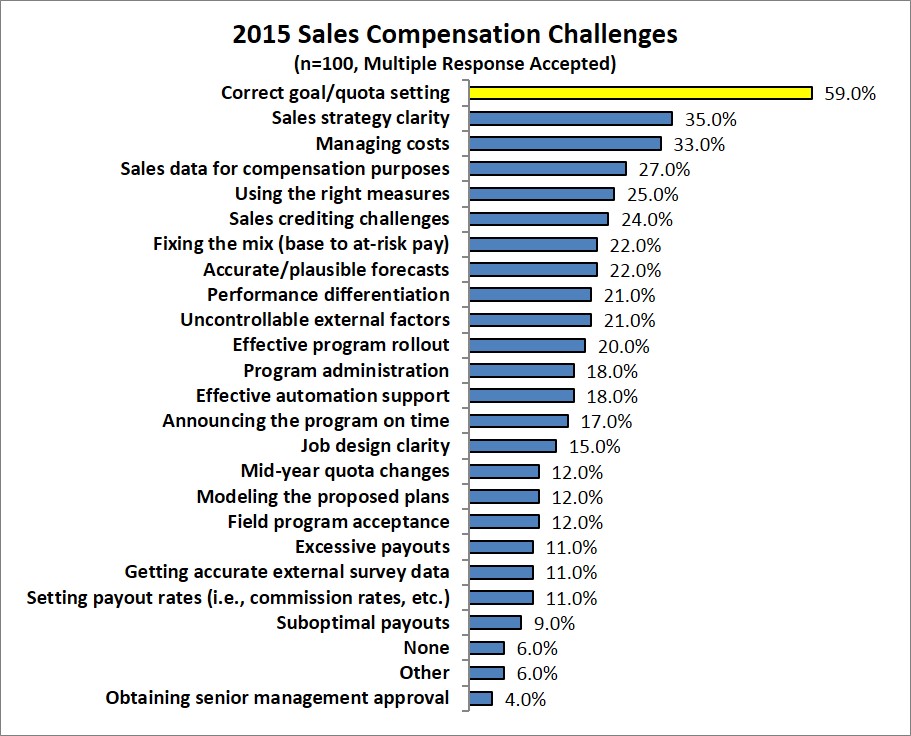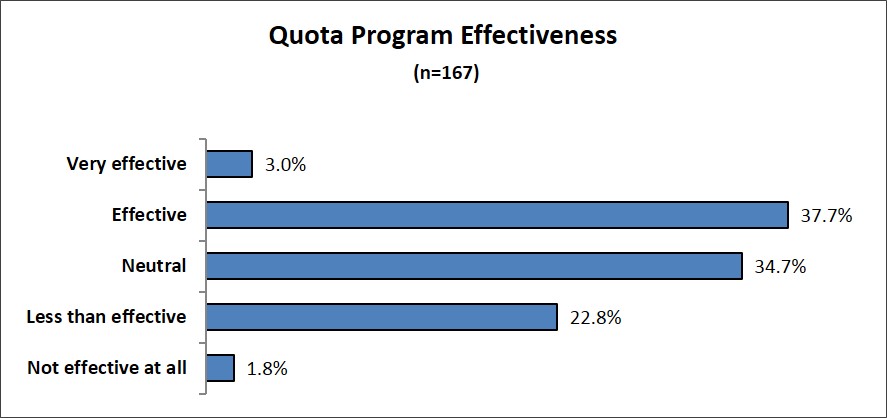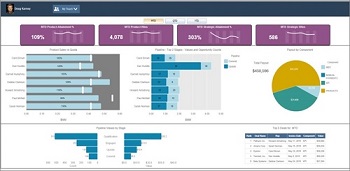Why Is the Quota Setting Process Important?
A recent Alexander Group survey showed 59 percent of participants reported quota setting as the top challenge among over 20 choices for their sales compensation program. Accenture research tells us that about 90 percent of companies leverage some quota-based incentives. Clearly, quota setting and management is a major focus for most sales teams.
Each year sales professionals are faced with plan changes, territory changes, new company strategies, and new hires depending on the organization. But the one thing every sales professional has in common is a new quota. This quota is the number (sometimes multiple numbers) that the sales team will strive to hit; that they will be judged on. In fact, their actual incentive payout, MBO payout, and performance evaluations will depend on it. If the sales team depends so much on this number, shouldn’t sales and finance leadership be doing everything they can to ensure it’s as accurate as possible?
The Problem with Quota Setting
As it turns out, quota accuracy is a major pain point for a lot of organizations. While most companies were looking to have 60 to 70 percent of the sales personnel achieve quota in 2016, 46 percent was the median population of sales personnel reaching quota among surveyed companies in 2015 according to the Alexander Group’s 2016 Sales Comp Survey. At the same time, the average increase in quota was 7.5% for two years running according to Sibson Consulting’s 2016 findings.

Source: “Five best sales quotas practices” – Alexander Group
64.6 percent of companies surveyed by the Alexander Group in 2015 did not have quotas ready by the first month of the fiscal year, and some delayed several additional months. If this plan is supposed to tie the company strategy to incentives, how can sales reps know which sales matter most or stay motivated and on target when they’re flying blind until the second quarter?
The Effects
Poor quota management tends to lead to more complexity in compensation plans and a greater lack of understanding. In numerous ICM implementations across many industries, the one common complexity companies deal with is managing and setting quotas. If companies fail to set achievable quotas it can negate the company’s compensation goals and make their plans ineffective. Whether a quota is based on a product line, subscription, or some other service, the multiple quota setting methods out there can greatly complicate the process if not carefully executed. A good compensation plan is one that’s easy to understand and not very complex.

Source: “Get sale quotas right” – Alexander Group
If sales is unable to focus on what they should be selling, it reduces their effectiveness, creates fewer top performing sales reps, and increases turnover. That’s why it’s crucial for any business to be able to properly set quotas that are attainable and achieve the results required to create high-performing sales people.
An Example from the Trenches
The sales department at one of the organizations we work with always has trouble setting and managing their quota every year due to varying challenges in the marketplace. The salesforce complains about the management constantly “moving the goal post” and “not being in touch with reality.” Management, on the other hand, complains about the salesforce “gaming the system” once they figure out the compensation plans and how to make their quota. They need increased visibility into the information behind quota decisions in order to establish more productive conversations around the process.
The best solution for both teams is to have a usable and accurate data-driven analysis available on why a particular quota is set based on market factors, past year sales, and future opportunities in the pipeline (logged in the CRM system). This transparency while setting quota, coupled with the systematic use of performance analysis and the opportunity funnel on a regular cadence throughout the year, will enhance the morale of the salesforce and increase the management team’s trust in the quota they set. Sales performance management is more than just disbursing compensation and setting targets. It requires analytics that support those formulas and keep the whole department on the same page.

The Bottom Line
All the data points around quota and the practical examples we’ve seen in the field paint a clear picture regarding the quota setting process:
- The majority of compensation plans rely on quotas to calculate payout.
- Far more than expected, sales people are not achieving at quota.
- Companies are pushing quota even higher.
- Companies struggle to get quota right and disseminate it in a timely fashion.
- This will cost companies real money!
- An Accenture report in 2016 estimated poor quota setting costs 6-10 percent more in compensation.
- Turnover rates are still high in sales: 26 percent in part due to missed quotas (2015-2016 Sales Effectiveness –Sales Acceleration Survey from DePaul University)
- Revenue targets are missed. Even when 63 percent of sales reps meet or exceed quota, companies on average achieve just 90 percent of their revenue target. (CSO Insights, “Sales Compensation and Performance Management Survey for USD 1B+ Revenue Companies,” 2015)
So What’s the Good News?
There are many proven practices around quota setting and management, such as the analytics example we mentioned, that can help alleviate the pain of the process and get sales reps and management up to speed faster. These also include formal quota setting methods, timing and communication strategies, and change management.
As you dig into the details it can get complex, but deciding on which of these processes are right for your organization will save you time and win you money in the future. It’s time to integrate this critical function into your sales performance management strategy so you can start seeing the quota attainment numbers you expect from a sales team motivated to meet them.
About Ironside
Ironside was founded in 1999 as an enterprise data and analytics solution provider and system integrator. Our clients hire us to acquire, enrich and measure their data so they can make smarter, better decisions about their business. No matter your industry or specific business challenges, Ironside has the experience, perspective and agility to help transform your analytic environment.
References
-
Angelos, Jason. “Sales Planning Like It’s 1999?” https://www.accenture.com/us-en/insight-sales-planning-1999
-
CSO Insights. “Sales Compensation and Performance Management Survey for USD 1B+ Revenue Companies,” 2015
-
Center for Sales Leadership, DePaul University. “2015-2016 Sales Effectiveness – Sales Acceleration Survey.” http://salesleadershipcenter.com/research
-
Cichelli, Dave. “Five best sales quotas practices.” Alexander Group. July 2015. http://www.alexandergroup.com/blog/sales-quotas/five-best-sales-quotas-practices/
-
Cichelli, Dave. “Get sales quotas right.” Alexander Group. August 2015. http://www.alexandergroup.com/blog/sales-quotas/get-sales-quotas-right/






